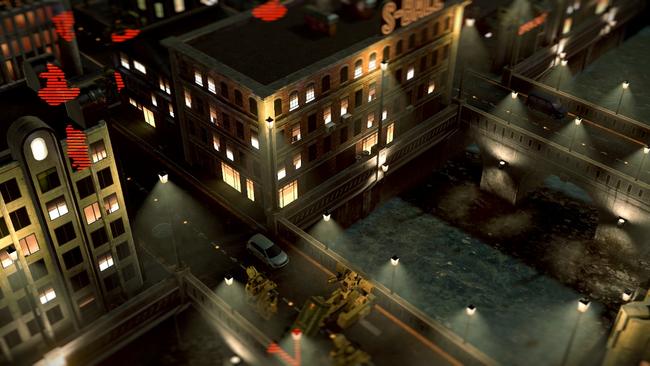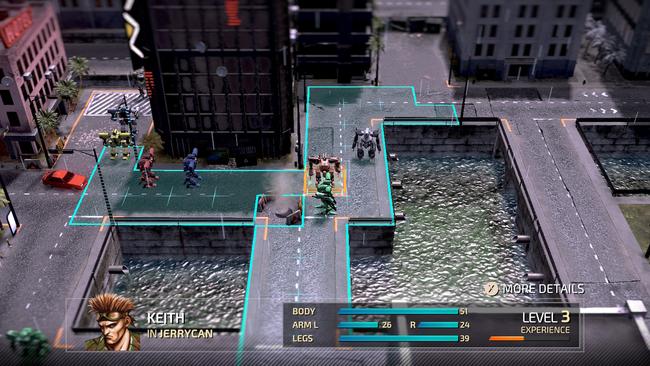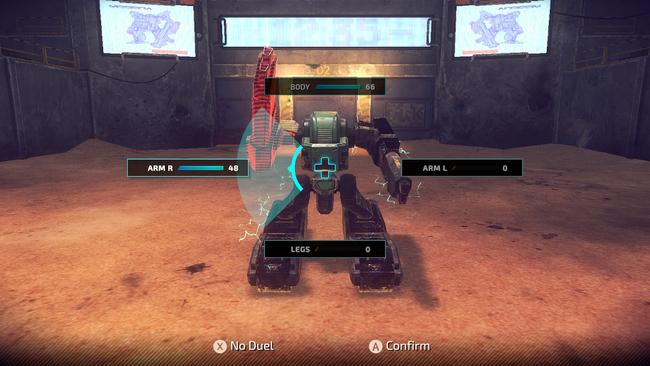
Front Mission 1st: Remake Review
It’s been a banner year for strategy RPGs. Triangle Strategy brought the gorgeous HD-2D engine to the genre, with its tense fights and branching storyline. Tactics Ogre: Reborn reminded us why legendary creator Yasumi Matsuno’s delicious blend of turn-based tactics and sociopolitical melodrama has been celebrated for decades as a crown jewel of its genre. Mario + Rabbids Sparks of Hope took everything its predecessor established and kicked it up a notch.
The fact that I feel slightly guilty for not spending more time listing several other prime examples of this resurgence in strategic role-playing entertainment is just further testament to 2022’s tactical goodness. But this review isn’t an annual retrospective — there’s an RPG of the Year podcast for that. This is about Front Mission 1st: Remake, which is - naturally - a remake of the first entry in the most mecha-infused series to ever hit the SRPG scene.
These days, Square Enix works with external development studios on a routine basis. But in the early 1990s, it was a foreign notion. As it happens, the original Front Mission was the inaugural instance. Toshiro Tsuchida — who, in addition to envisioning Front Mission, would go on to bring Arc the Lad to life as well — helmed the team at G-Craft.

Per developer interviews on Front Mission’s inception, Squaresoft was rather against supporting the project at the start; ‘no robots’ was their refrain. A few years later, with Front Mission 2 in the works, Square bought G-Craft in full. Clearly, the tone had shifted to ‘more robots’ following the first game’s success.
And so began the saga of the struggle between the Oceania Cooperative Union and the Unified Continental States, two superpowers whose armies are chiefly composed of giant robots called ‘Wanzers’, piloted by skillful soldiers like OCU captain Royd Clive. Front Mission 1st: Remake centers on the debut installment’s clash over control of Huffman Island, a key strategic location in the Pacific Ocean. The plot thickens, especially in the back half of the game, with ample intrigue. But the focus, through it all, is about the effects of war on not just the warriors, but the people caught in the crossfire.
It’s a good premise. Does it hold up especially well nearly 28 years later? Or perhaps the more operative query is, ‘Has the game’s remake enhanced the somewhat threadbare presentation?’ Yes, it holds up decently; no, the story hasn’t been given any extra flair, nor fleshed out more with an upsized script that could have helped the cast spring to life a little more. Front Mission’s characters, conventionally, don’t have quite enough presence for my taste; at least they ooze style.

But whereas the story hasn’t gotten any added frills (unless we count the nifty second campaign, which dates back to the 2007 Nintendo DS port), the visuals are better than ever. There’s a certain undeniable slickness to Forever Entertainment’s graphical makeover. Environmental details positively shine, although I’ve seen mentioned that the newly-remodeled Wanzers come off as less grunge-industrial, as they once were, and more toy-like. Perhaps I’m an easier please, but not once have I gazed upon these prettier renditions of mobile war machines and seen anything less than mobile war machines.
A handful of times, I’ve looked up how specific battlefields appeared in the SNES/PS1/DS versions of the game, and there were instances in which I did walk away thinking Front Mission 1st: Remake’s added detail is somewhat marred by a more sterile composition. But for the most part, this is lush.
Unfortunately, I’m less keen on a few other critical aspects of Front Mission 1st: Remake’s overall package. During my time with the game, several music tracks during battle would repeatedly fade out after a paltry 20-30 seconds, rather than looping organically. Perhaps a small thing to some, but odd to my own ears, and hopefully something that can be patched.

Less easily ignored is the fact that, while the ability to rotate the map (to an extent) and zoom in and out as you like helps mask the issue, there are points in which it’s all but impossible to get a full read on the situation because the camera refuses to move to a more ideal angle. This is compounded by Front Mission 1st: Remake’s peculiarly touchy controls; mostly, they work just fine, but it’s weirdly easy to accidentally end a given character’s turn either after moving them however many isometric spaces they can go but before attacking, or before taking any action at all.
Front Mission’s level of difficulty is… interesting. I don’t mean that in a bad way, although I do find elements of it frustrating. Wanzers are the stars of the show in this game, as well they should be, with a plethora of customization options including the frame, the legs, both arms, both shoulders, CPUs, several classifications of weaponry, and more. It’s riveting stuff, and it makes sense that in addition to the body, the arms and legs can be targeted in combat.
The trouble is, until you unlock specific skills, the enemy unit’s parts your team targets are decided seemingly at random. Mind you, the body needs to drop to zero hit points to count as a kill. There are reasons why it’s beneficial to get rid of a Wanzer’s other parts, but they’re never going to be as compelling as simply getting to the point already and destroying it wholesale. It can be irritating to watch Royd and his companions, backed into a tight spot because the early game is frankly a bit brutal, and you’re firing back with everything you’ve got, but they keep shooting at feet.
Accuracy is dictated by an array of things related to customization and characters’ own level-ups (‘pilot levels’), but in my experience, there’s a harsh curve here. Enemy missile-launching mechs are going to be more accurate throughout the roughly 30-stage main campaign’s first eight or nine levels than even your melee-oriented units, so expect to get hit hard.

On the flip side, there are those aforementioned unlockable skills. By comparison, they can almost become game-breaking. It takes quite some time for the party to begin learning them, and there aren’t many, so I’ll only mention two. ‘Duel’ lets you target a specific body part. So long, ankle shots. ‘Double’ lets you attack twice. Not happy that a spray of bullets missed their target? Not to worry. The second third or so of Front Mission’s stages can become a cakewalk in this manner, because most foes aren’t using skills yet of their own. It’s only toward the end that balance is finally achieved.
It can be tough to maintain all your Wanzers, giving them fresh parts every time the seller has new stock. You can either save up for when the changes are bigger, skipping some incremental fare; or, if you’re like me, you can take full advantage of Front Mission 1st: Remake’s money-making (and pilot-leveling!) arena. Here, you won’t traverse a battlefield. Instead, you send one of your units out to combat a rival unit of your choice, and the battle phase continues nonstop until only one of you is left standing. I like that eliminating both arms wins you bouts here. Arena fights are relatively simplistic, and yet this adds a neat little wrinkle.
I suspect my tone in this review has been scattershot. In fairness, my feelings toward Front Mission 1st: Remake are appropriately varied. There’s a great plot in here, marred somewhat by a too-terse script that I would have loved to have seen extended. Battles are fun, with diverse maps where every move counts — but at times it seems the game itself becomes your primary antagonist, with quirky controls, middling camera views, and more than enough missed missiles to have you swapping between praying to a deity of your choice when your enemy’s don’t land and cursing instead when the misses are your own.
Front Mission 1st: Remake is a good time, if not quite a great one. For all its bumps in the road, and in a strange way, perhaps in part because of them, there is immense satisfaction in clearing each stage. Regardless, I’m glad the series is getting some love again, and I’m pretty pleased with Forever Entertainment’s crack at things overall. If their quality of work is maintained going forward, I suspect we’re in for some real treats with the second and third installments.